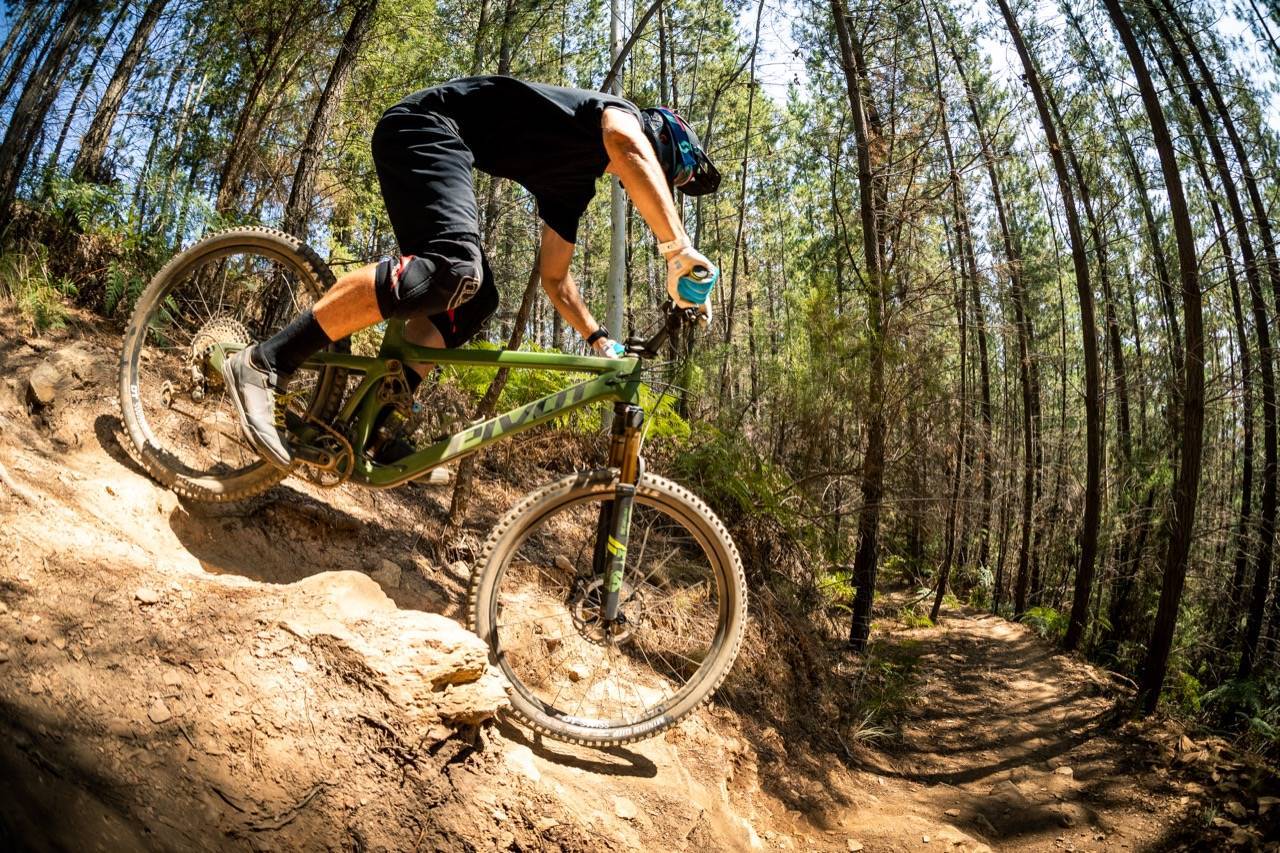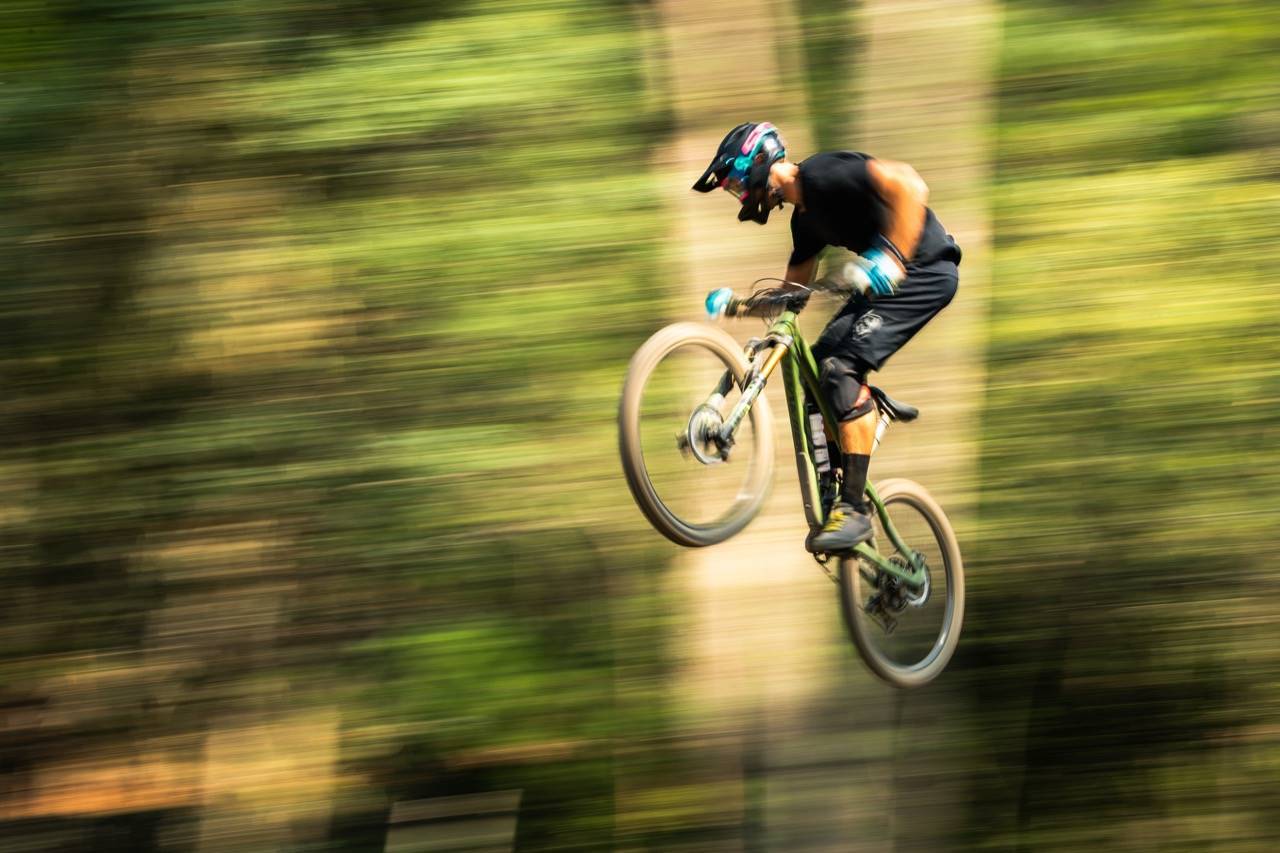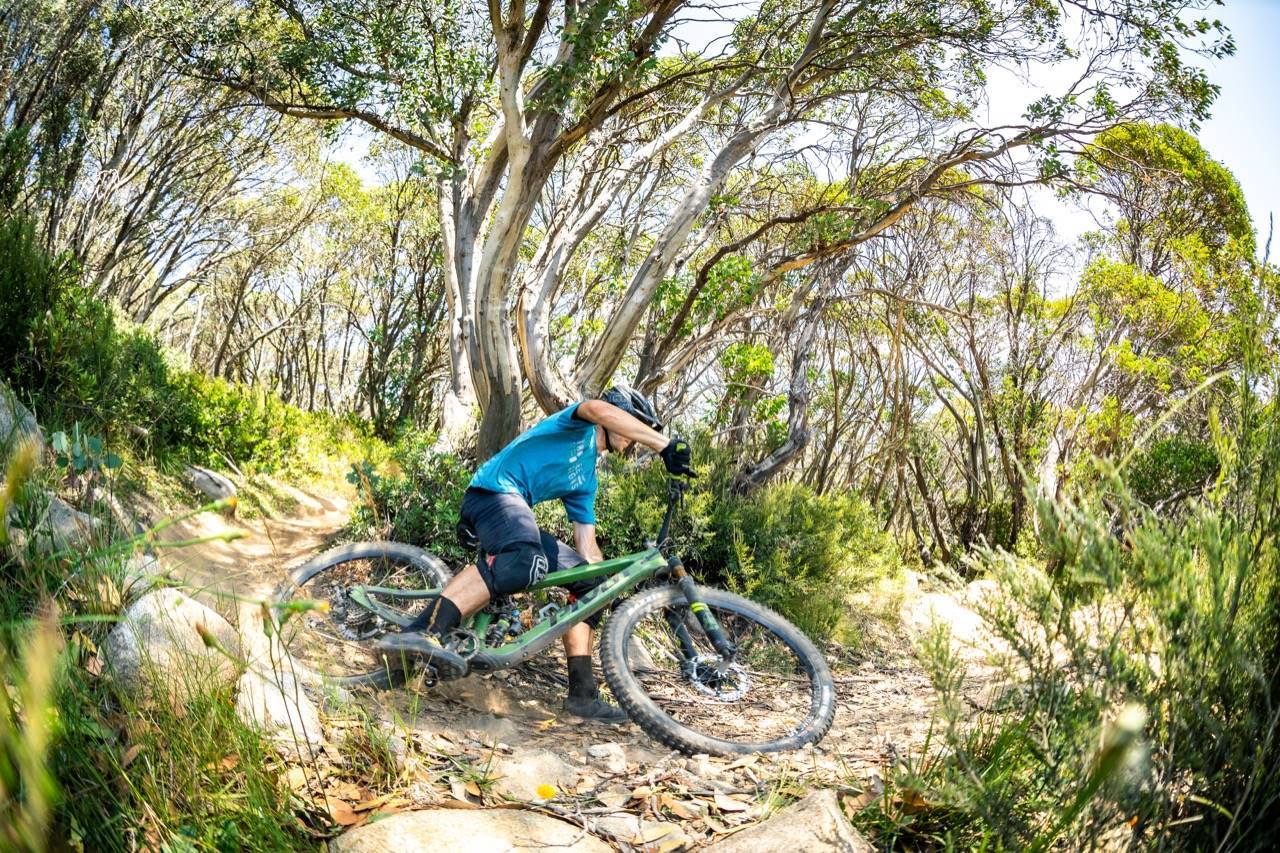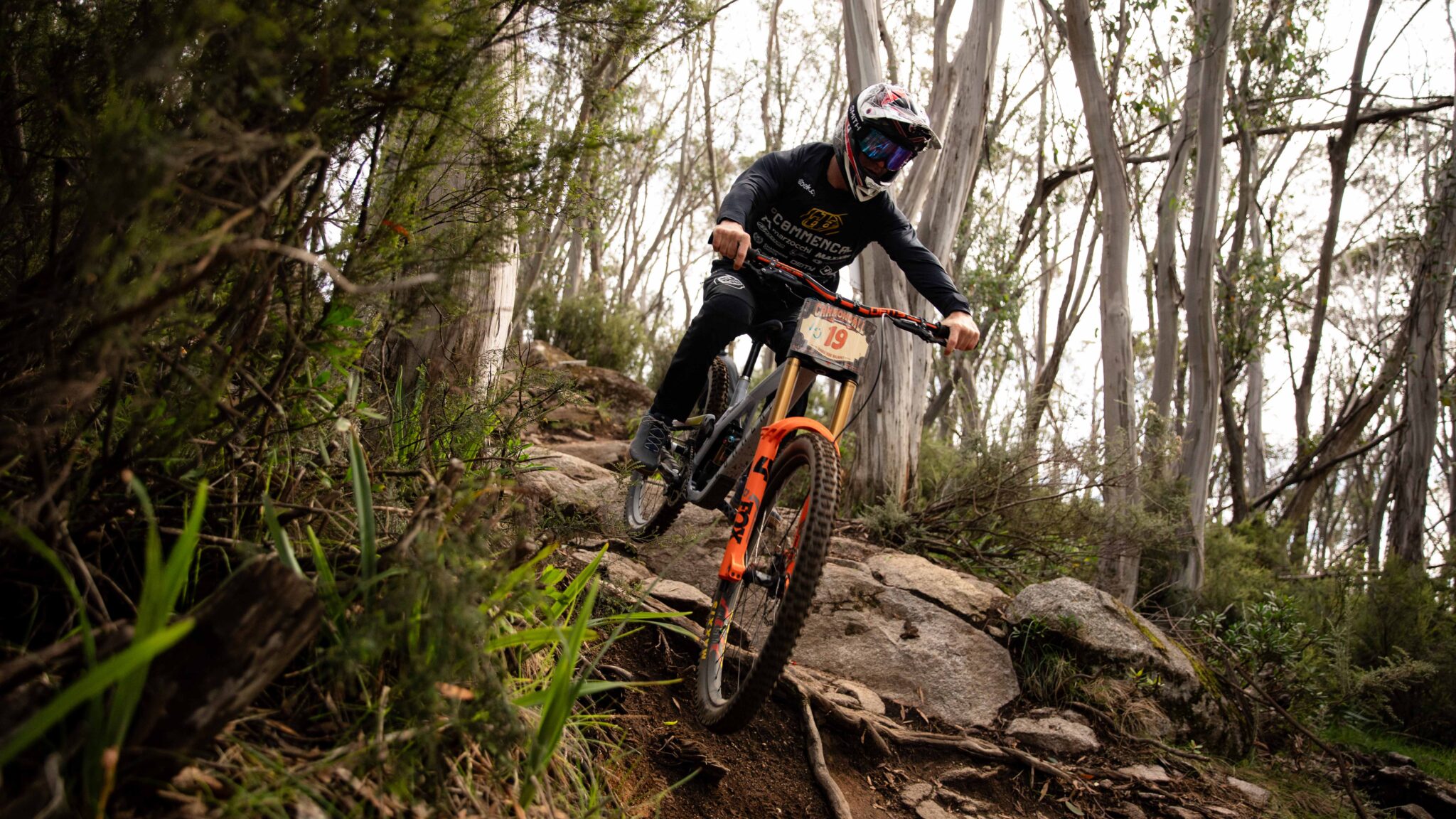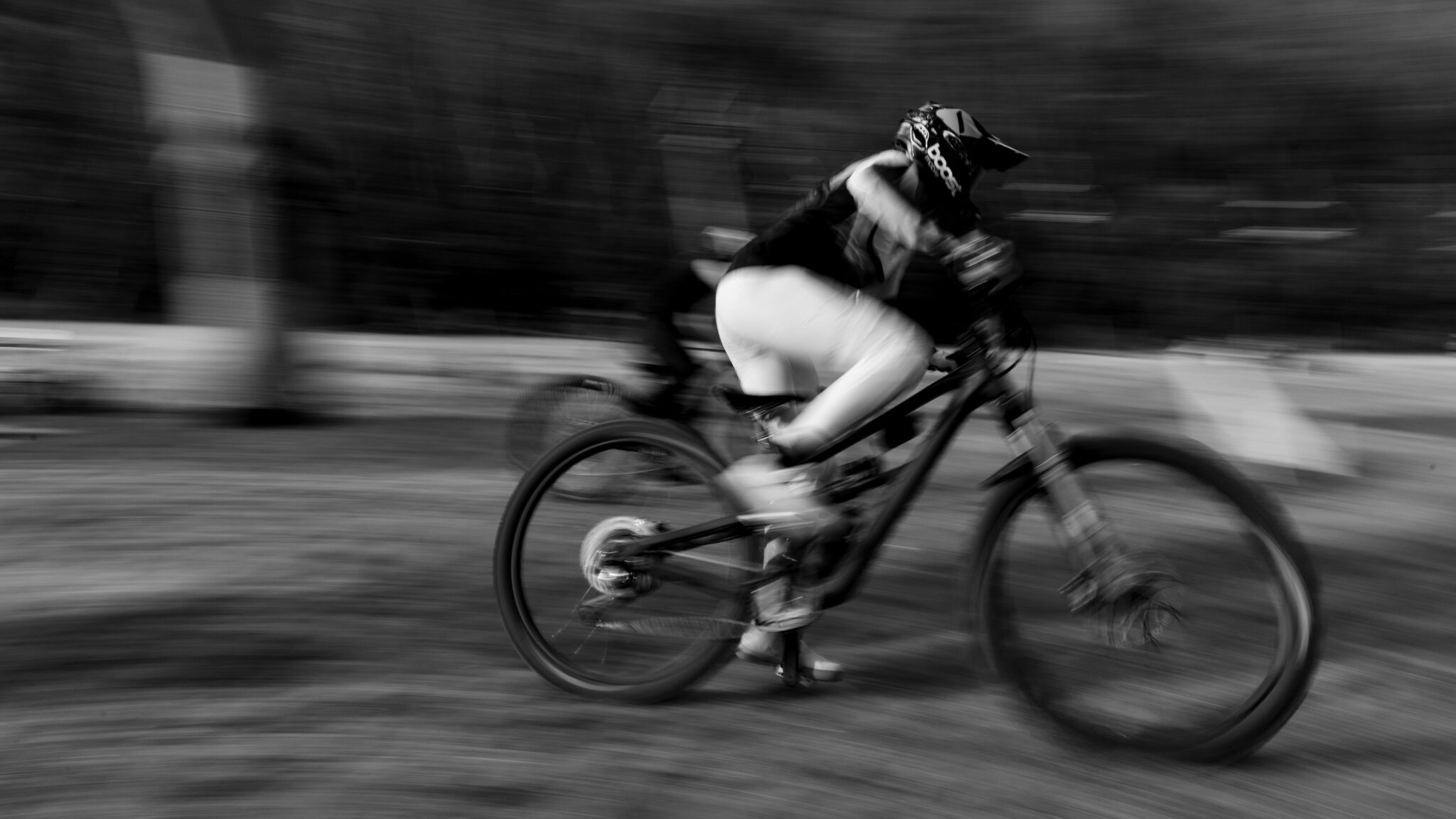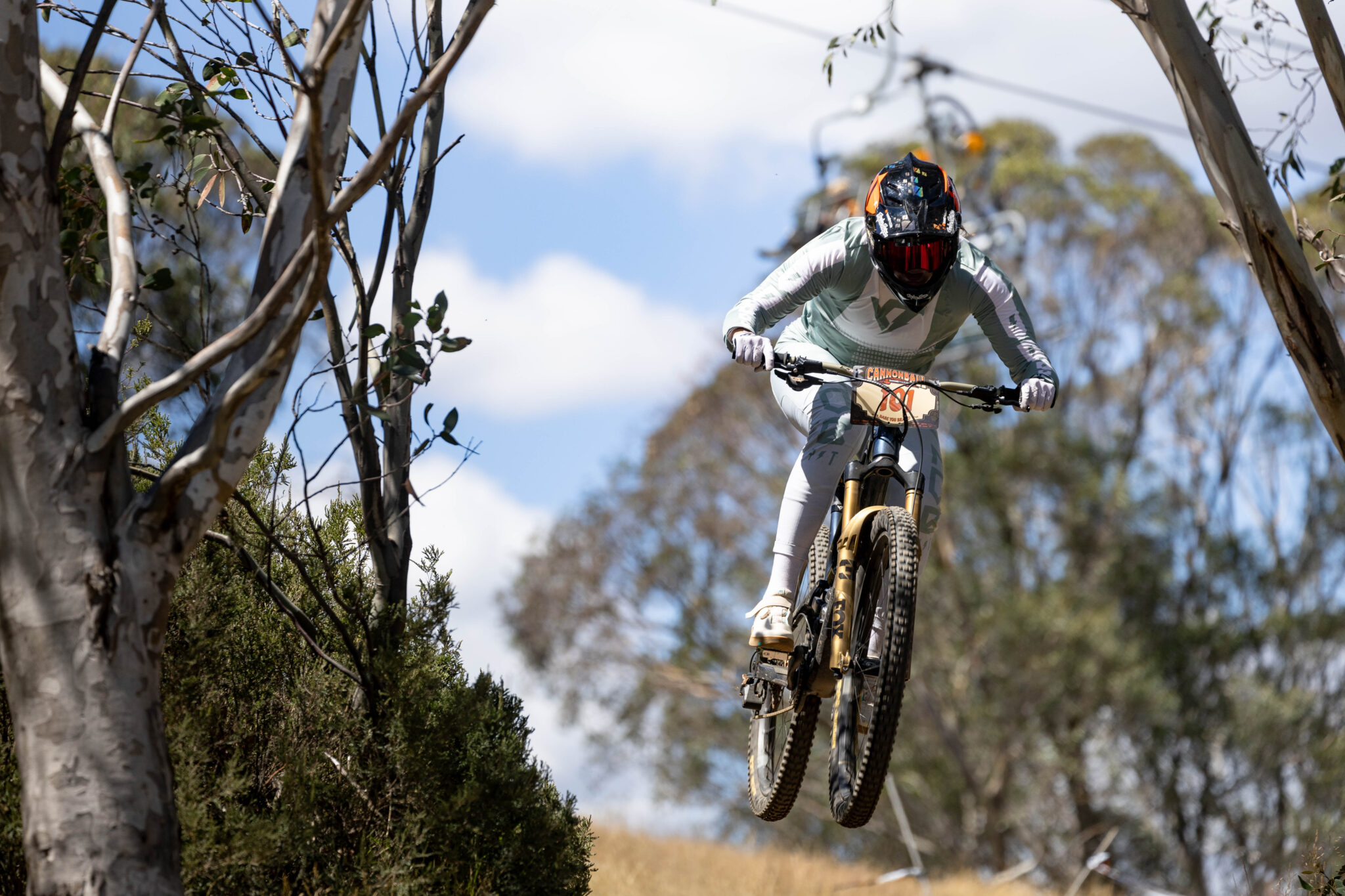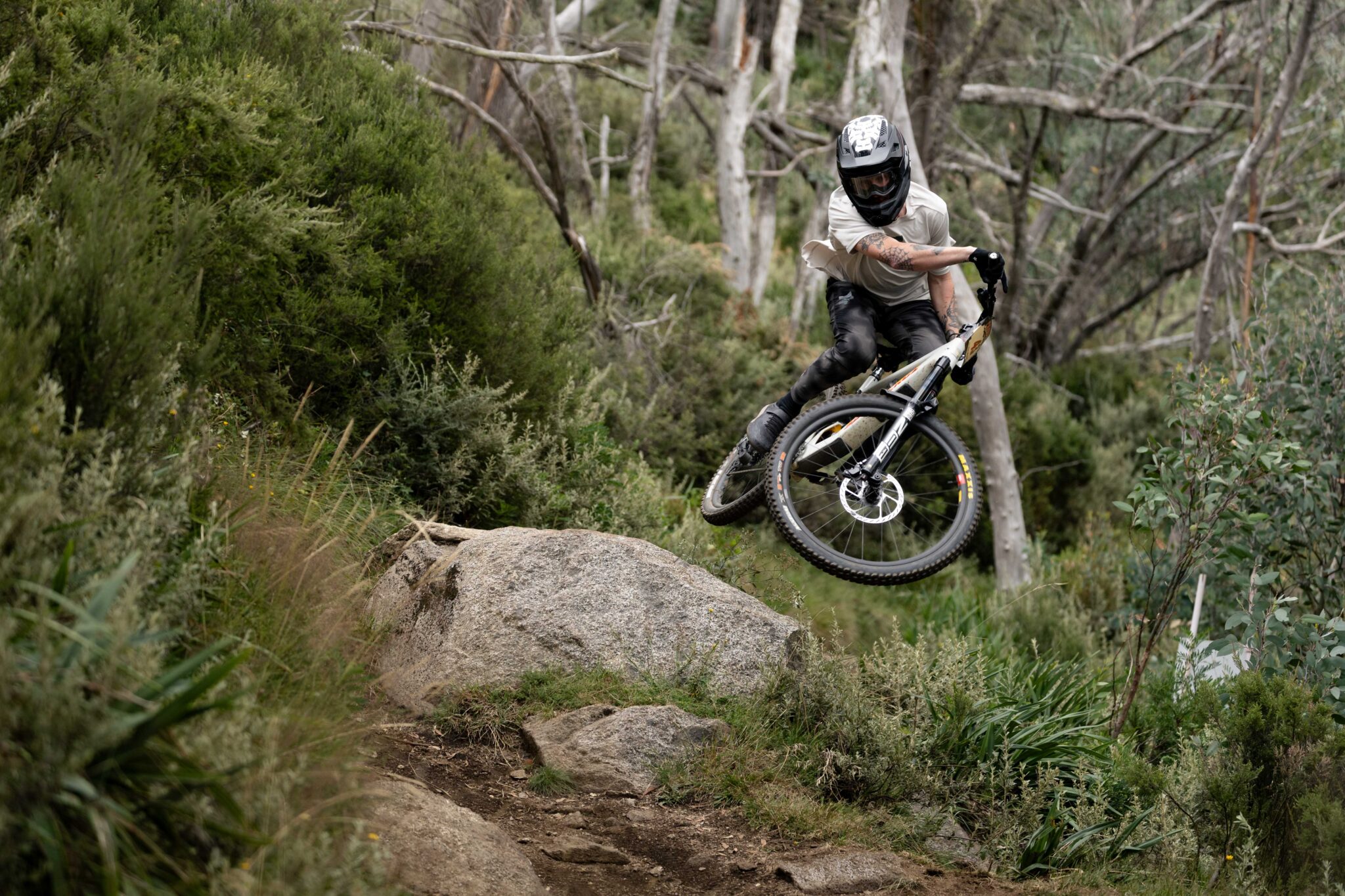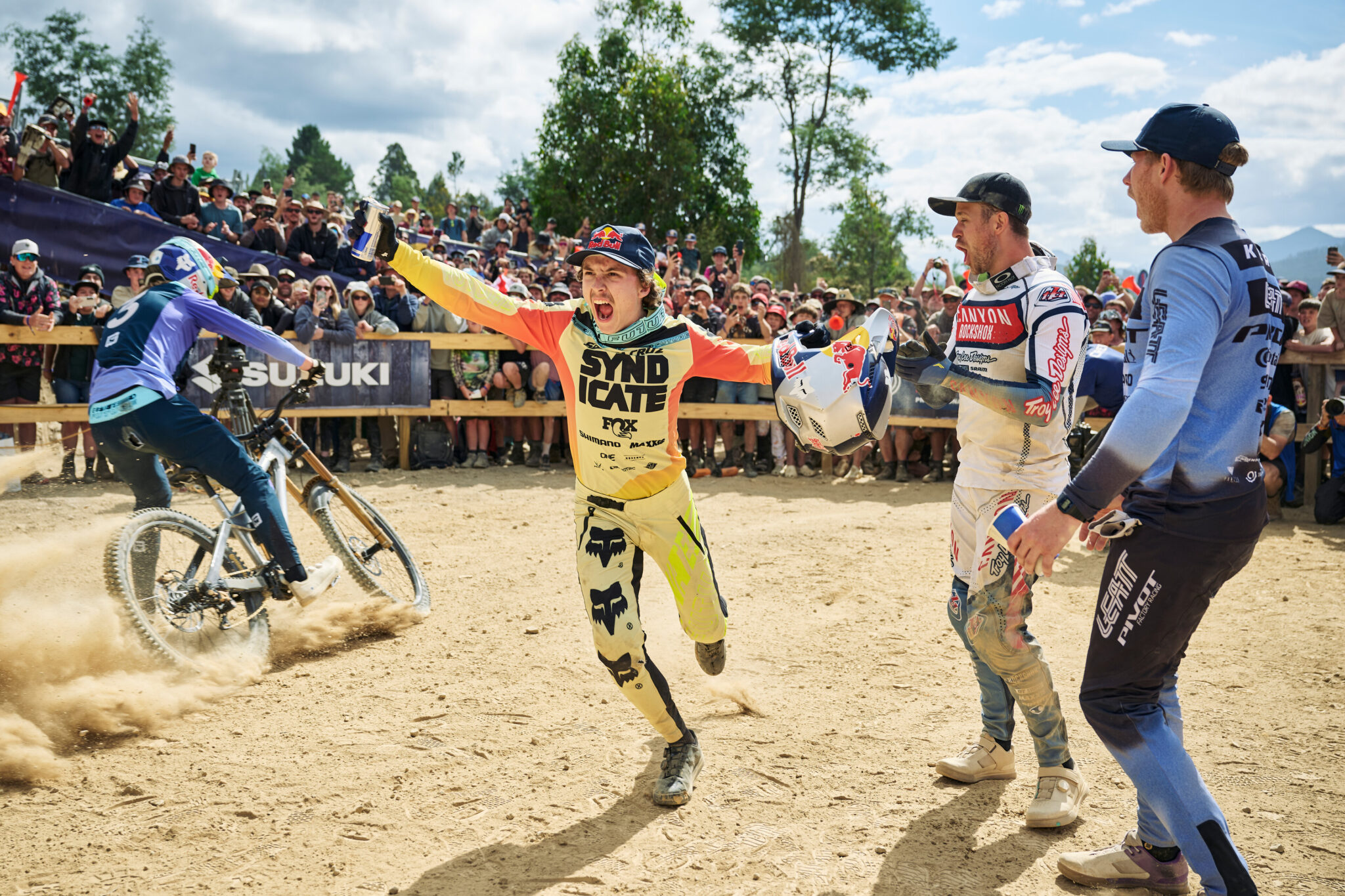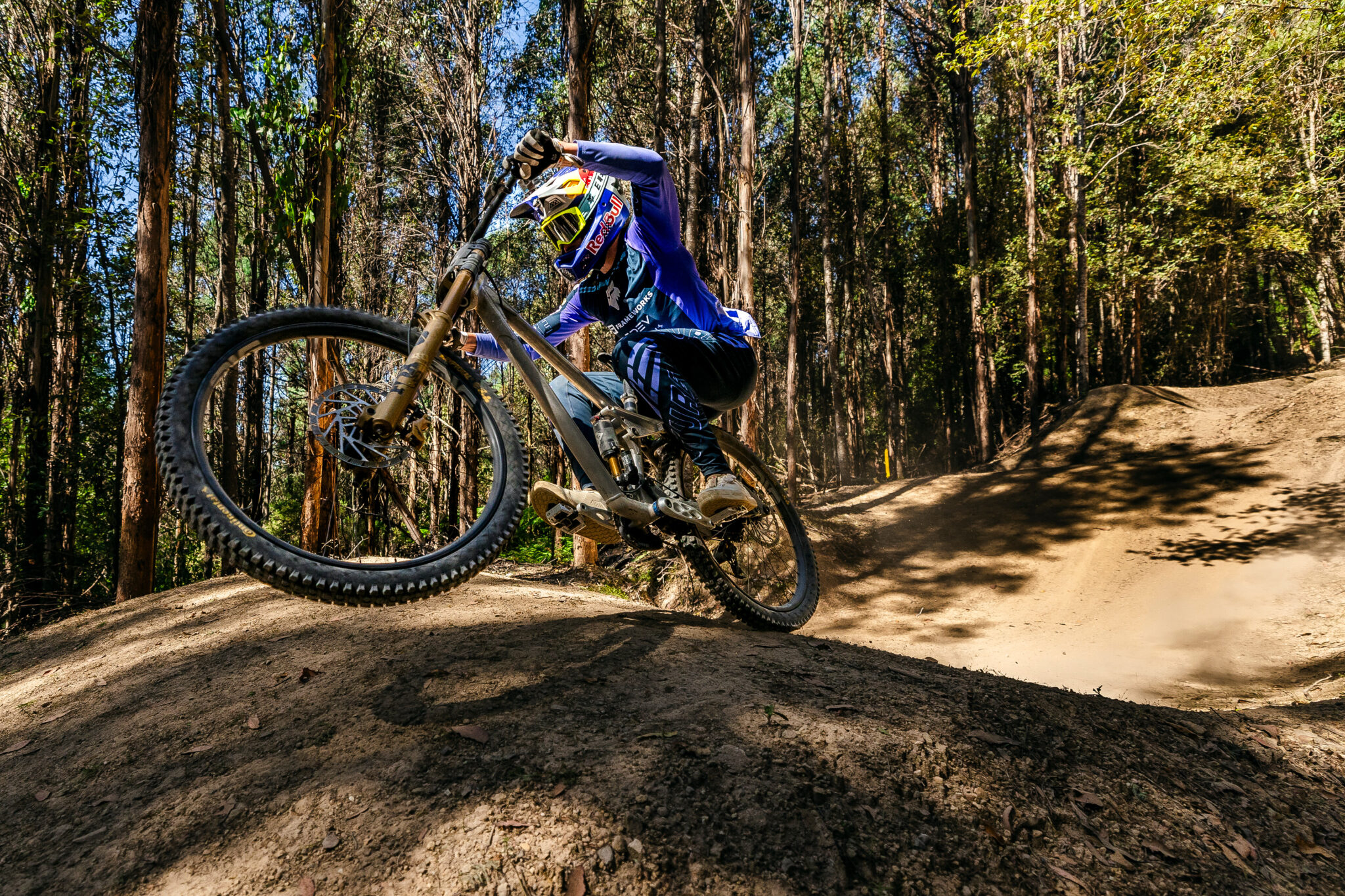TESTED: Pivot Switchblade
Testing the genre bending Pivot Switchblade all mountain bike!
Words: Chris Panozzo Photos: Nick Waygood
By launching an all new sequel to its popular predecessor, Pivot has their fans the world over excited about the launch of the new Switchblade. The genre bending original opened riders’ eyes to the possibility of a true all-in-one bike, switching from 27.5+ to 29” wheels along with geometry that pushed the conventional norms, they produced a bike that would take riders everywhere from after work spins to Enduro World Series stages. In launching the all-new Switchblade with a completely redesigned DW-link suspension layout, has Pivot been able to hit that all mountain sweet spot again? Or has the need to satisfy so many different scenarios produced a bike that makes too many compromises to please everyone? Let’s take a closer look.

Initial Impressions
The first thing you notice on the new Pivot Switchblade is the new shock orientation, Pivot has finally given in after years of slinging the rear shock horizontally mid frame, it’s now placed it in the similar spot to nearly all of its competitors, running parallel to the seat tube just above the bottom bracket. While aesthetically it may start to look like some of its competitors, there are so many benefits to this configuration that it’s surprising it has taken this long for it to happen. The first major benefit is the ability to run a full-size water bottle inside the frame, which will no doubt have Pivot fans grinning from ear to ear. The new layout allows for a much lower stand over height too, the tighter packaging has resulted in Pivot being able to increase the stiffness and reduce the weight of the frame down to 2.57kg (minus the shock), all good news for a bike that is aimed at getting to the tops of mountains without any chair lift or shuttle assistance.
Setting up the bike has been made so much easier by the size specific spec, where stem and handlebar lengths are matched to sizing, with the bike coming stock with a shorter stem and handlebar if you’re on the shorter side of life and need an extra small or small. This includes the dropper length as well as saddle size. Small things add up to make a great experience on the bike, and to have a bike fit so well straight of the shelf needs to be commended. Riders may still choose to play around with different components in the medium to long term, but off the shelf this bike comes ready to go.

The test bike I rode came in 29” version front and back. This needs mentioning, as the bike can run 27.5+ to 29” wheels in any configuration you want, including the reverse mullet for people who only like business out the back (29” rear, 27.5 front). Geometry is managed during wheel changes by the flip chip in the upper linkage mount, which can control minor changes if you’re looking to fine tune the bike down the track. The suspension has been upped to 160mm at the front and142mm at the rear, lifting it out of the trail bike category and giving it all mountain, and even “enduro” aspirations.
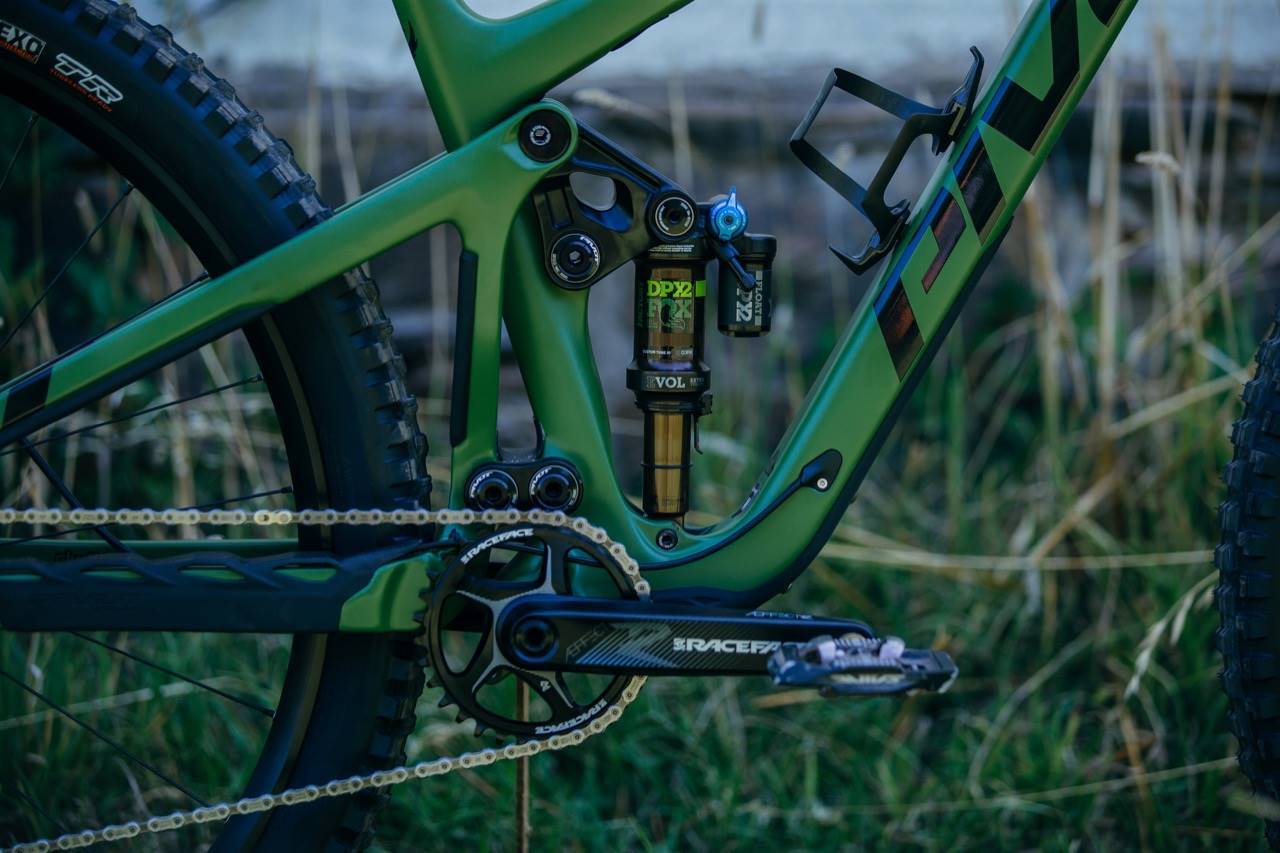
As with all new bike releases these days the flavor of the month term is still “stretched out geometry” to give the bike more capability. What does that even mean? Isn’t more suspension the extra capability, or is the new school geometry giving it the capability? The new Switchblade comes with that “stretched out geometry”, my test bike was a size XL with a reach of 490mm and stack height of 661mm, which is right in line with the current thinking, and indeed, it does make me feel much more at home on the bike more so than the extra suspension, so kudos to the design and marketing teams on that one, but more on that later. First impressions when jumping on board is the clean finish and attention to detail across the bike, with what seems like a smaller tube size and a much lower stand over than its predecessor, all big gains made with that new shock orientation. Another thing that stands out, or should I say, stays well-hidden are all the cables for the brakes, drivetrain and dropper. With individual ports for most cables and proper clamps bolting into the carbon frame to hold the cables in position, this is a another small detail that’s done really well, which when you add all of them up at the end, makes for a great all round package and something that is often forgotten by other major manufacturers.
On the Trail
First things first, the bike pedals very well no matter what type of pedaling you are doing, from casually spinning to putting down the power. It’s no XC bike by any means, but you don’t feel like the power is being sucked away by external factors before it gets to your rear wheel, and with the amount of suspension on offer, that will definitely be appreciated by the majority of riders looking to buy this bike. This is no doubt in part due to the tyres mounted to my test bike, while they provide a substantial amount of grip, the side walls on the Maxxis EXO casing do not provide enough support if you plan on putting much energy through them, slapping a hard pack turn aggressively will burp the tubeless setup nine times out of ten. But don’t let that deter you, a quick tyre swap to a firmer casing and you’ll be back at it, even if the slightly heavier tyre will add the time it takes to pedal up the hill, you’ll be very comfortable doing it, with an updated 75.5 degree seat tube angle, it sits you further forward on the bike and away from being slung out over the rear tyre, which for climbing up techy sections is much appreciated.

The test location for this Aussie launch was the Mystic Bike Park in Bright, Victoria, followed up by a visit to Falls Creek’s Bike Park the following day. I know both locations very well, which for me made it the perfect location to get a good insight as to how this bike compares and sits in the market. With big claims made by Pivot about the Switchblade’s genre bending capability, it definitely started out of the blocks the right way, there was nothing negative to report back after 40 minutes of climbing to get to the top of the test track, sure there are other bikes out there which climb faster and easier, but all of them have less suspension than what this Switchblade does. Would that be a fair comparison though? Most brands have shifted their product lineup to accommodate bikes with a specific purpose in mind. With geometry changing, bikes with a lot less travel have become so much more capable, allowing brands to target specific characteristics for each market. It’s been a few years since all the leading brands brought out a 160/140 model, so it’s not entirely fair to say this climbs well against a big travel bike, as it’s not a big travel bike, nor can I say it’s slow compared to a short travel bike. Moving on….

Once you’re at the top, the bike has a certain presence that would be intimidating to other less sprung bikes. With 160mm of travel up front it’s immediately trying to claim front spot from the group for the descent, which, honestly, I’m not sure that’s what the people who might buy this bike are looking for. Nevertheless, with a confidence inspiring setup I immediately threw it down the track to see what it’s capable of.
The Switchblade holds its own pretty well, the bike easily managed itself through tight switchbacks even though I’m on the XL with 29’ wheels front and back. I was riding a mix of techy singletrack and machine-built jump lines and the bike was performing throughout. It has a very neutral riding characteristic, I found I didn’t need to hang off the bike to get the bike through a series of fast loose turns, nor did I need to get forward when the speed slowed down where I might need to position it precisely through switchbacks, I could hold a central position when traversing across a series exposed tree roots, and when I was turning across off camber sections I could get an even amount of weight across both ends of the bike that allowed me to position the bike where I needed, exactly what is needed to build confidence that allows you to utilise all of the travel on offer. Once I started to get a bit more relaxed and trust the bike, is when I started to see some of its flaws, finally! I was beginning to think Pivot had built this mythical unicorn than could do everything well without any issues!
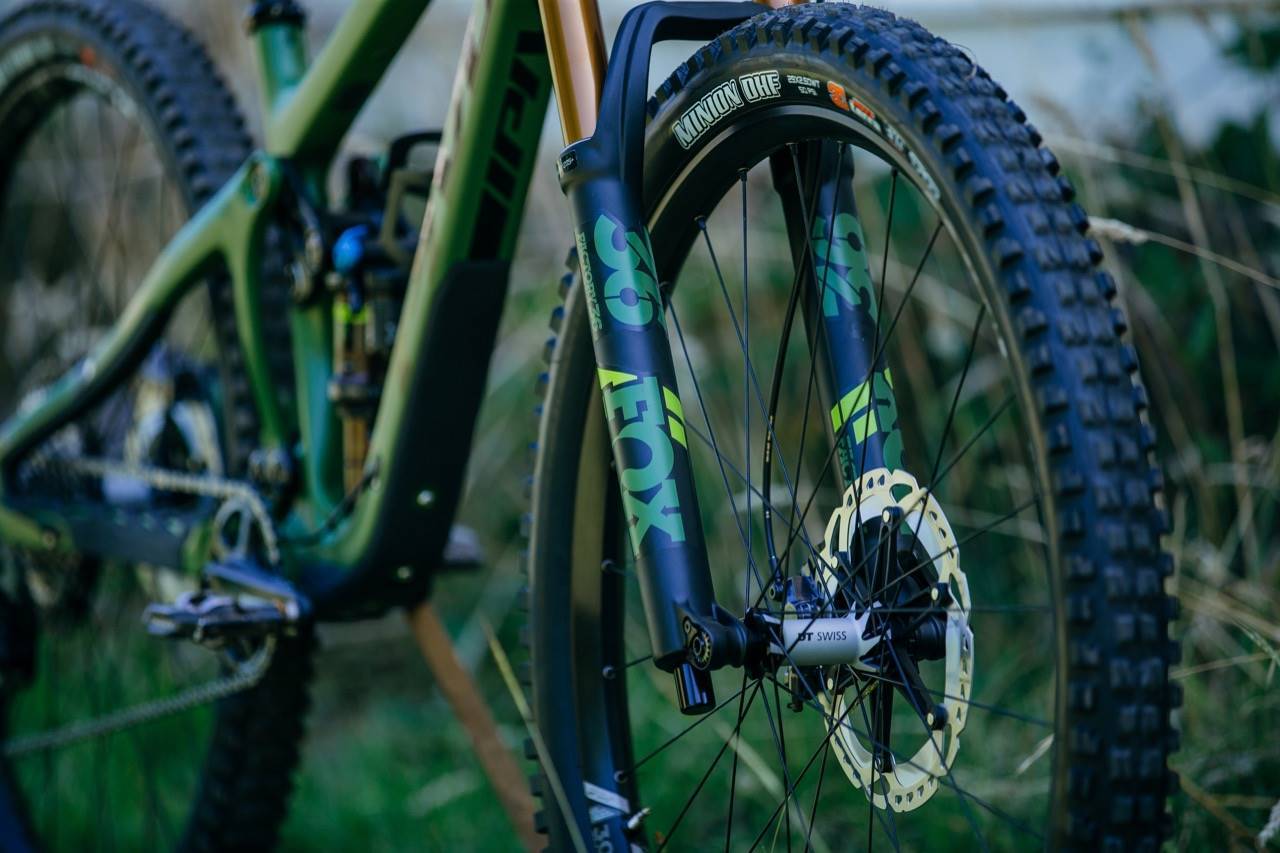
It is only when you really start to push do you see the limits of the Switchblade. When holding it wide open the rear end becomes a lot more unstable, at times trying to overtake my front wheel which wasn’t exactly what I was looking for, and this can happen every now and then as the 160mm spec Fox Fork with a 29” wheel can eat up trail when setup correctly, leaving the 142mm travel rear end a bit exposed. This bike is definitely not an all-out Enduro race bike, nor was it designed to be, so we can’t hold anything against it when it does start to get a little awkward at a high pace, there is Pivot’s race-proven Firebird if you’re looking for something that takes on the clock with confidence.

Our Take
The build quality is second to none, but considering the price, $10,999 for the Pro XT/XTR build I tested, and even the base model brought into Australia at $8,999 you would hope the bike comes with a solid build kit. The attention to detail is worth the extra money if you want a no-hassles bike, you can see the thought put into this bike goes all the way down to the chain stay protector, which its wrapped around in so many orientations to ensure a quiet ride for those chain slapping runs. The only thing I noticed which could be become an issue, although it wasn’t during the test, was the small rubber protector that sits between the main frame and the lower linkage to the swingarm. It’s there to stop rocks and grit from grinding together as the linkage goes through its travel. It could be another one of those careful attention to detail things, or it could be a problem should the adhesive become weak if you’re doing a lot of wet weather riding. There are mounts underneath the top tube to take a yet to be released tool kit from Pivot, which is very handy, but it will ruin some of the aesthetic appeal of the smooth lines of the bike with the tool kit in place, for a do it all bike it would have been nice to see a hidden storage box in the downtube, keeping everything out of sight and the weight down low would have been a better solution, which we are seeing from other leading brands in the same price bracket.

Normally the tendency is to point out the negatives of a bike and sometimes forget what it does well, and after a few runs up and down the hill I found that I wasn’t doing either, I wasn’t finding anything wrong with the bike, nor did it do something out of the ordinary and surprise me, which I think is exactly what Pivot wanted this bike to do. To perform well in so many scenarios is a credit to the design and test team, but is it what the consumer is asking for? I could be wrong here, but it’s been quite a few years now since a leading brand brought out a 160/140 bike, maybe Pivot are trying to occupy the space that has been left by other brands building specific short and long travel bikes.
The Pivot Switchblade does everything it’s supposed to yet doesn’t win you over by doing something exceptional that makes you forgive any flaws, because it doesn’t really have any. The Switchblade is a safe bet, a sensible choice instead of the all-out EWS chariot like the Firebird. If you’re stuck justifying a trail bike and a long travel bike maybe this is the happy middle ground?
Brand: Pivot
Model: Switchblade
RRP: $10,999.00
From: JetBlack
Available sizes: XS, SM, MD, LG, XL (tested)
Frame material: Carbon Fibre
Fork: Fox Factory 36 29”, 44mm Offset, GRIP2 – 160mm
Shock: Fox Factory DPX2 – 142mm
Shifter: Shimano XTM8100 ispec 12sp
Derailleur: Shimano XTR M9100 SGS 12sp
Crank: Raceface Aeffect R 32T
Chain: Shimano CN-M8100 12sp
Cassette: Shimano XT M8100 10-51T 12sp
Wheel set: DT Swiss M1700 30mm, 29”
Tyres: Front: Maxxis Minnion DHF 29”x2.5” WT TR EXO Rear: DHR2 29”x2.5” WT TR EXO
Brakes: Shimano XT M8120 4-Piston 200/180mm
Stem: Phoenix Team Enduro/Trail – 35mm (XS) 45mm (SM-XL)
Handlebar: Phoenix Team Low Rise Carbon 800mm (XL)
Seatpost: Fox Factory Kashima Transfer
Saddle: Phoenix WTB Pro Vigo (XL)am

